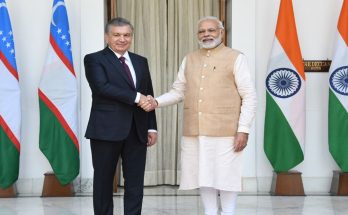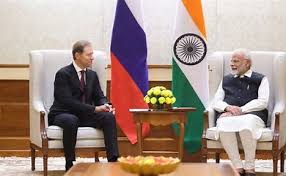 The inadequacy of quality infrastructure at internationally competitive prices has long been recognized as a handicap to the development of the economy. Given the focus of the government on ’Make in India” to create mass manufacturing for job creation, it was imperative for the Budget to address issues that constrain the infrastructure sector and pursue reforms with more rigour. But has the budget done enough to boost the infrastructure sector?
The inadequacy of quality infrastructure at internationally competitive prices has long been recognized as a handicap to the development of the economy. Given the focus of the government on ’Make in India” to create mass manufacturing for job creation, it was imperative for the Budget to address issues that constrain the infrastructure sector and pursue reforms with more rigour. But has the budget done enough to boost the infrastructure sector?
Broadly, the key measures announced in the Union Budget provide a renewed impetus to the investment cycle and infrastructure sector in the country. A few of the key measures include creation of a National Infrastructure and Investment Fund (NIIF) with annual inflows of Rs, 20,000 crores which would make funds available to firms for new projects, corporatisation of ports, revisiting the Public Private Partnership framework and the announcement of five new Ultra Mega Power Projects (UMPP’s). The UMPP’s will each be of 4,000 megawatts, totaling 20,00 megawatt and entailing a total investment of Rs, 100,000 crores. The best part of UMPP is that all approvals will be taken in advance and bid winners will only run the risk of project development and execution. The long-standing demand for developing a bond market for infrastructure has also been addressed with the introduction of tax free infra bonds for railways and roads. Further, Rs. 20,000 crores has also been allotted to the Rural Infrastructure Development Fund.
For FY 2015-16, the increased provisions have been made for development of national highways, including projects related to expressways and six-laning of crowded stretches of the Golden Quadrilateral and two-laning of highway works under the National Highways Development Project. For the roads sector, the budget has proposed connecting each of the 1, 78, 99 unconnected places by all-weather roads. This would require completing 1,00,000 km of roads currently under construction, in addition to sanctioning and building another 1, 00,000 km of roads. The budgetary allocation to roads and railways has also been increased. For instance, the planned allocation to the road transport and highways ministry has shot up to Rs. 42,913 crores in 2015-16 as compared to Rs., 28,881 crores in the current financial year.
Infrastructure spending in India currently stands at 8 per cent of GDP and going forward the aim is to increase it to 10 percent. The extent of scaling up needed in infrastructure development in India is huge. China spends nearly 11% (with more than 3 times of India’s GDP) of its GDP on infrastructure, one of the factors responsible for competitiveness of its manufacturing sector. The projected investment in infrastructure in the 12th Plan (2012-17) is Rs. 1 trillion with more than a third expected from the private sector. However, private sector participation in infrastructure has been low due to several bottlenecks and challenges related to availability of bankable infrastructure projects along with land acquisition and environmental issues. There are several obstacles to speedy rollouts of infrastructure projects. Progress is slow because of delays in decision-making and problems with land acquisition, while environmental clearances have added layers of complexity for investors trying to navigate India’s bureaucratic bylanes. NGOs add to the delay by holding up projects by filing writ petitions. However, the present government has given enough indications for transparency in environmental clearances and making land acquisition easier. Therefore, it is hoped that the measures announced in this budget would help kick start activity in this sector with active participation of private sector in the coming months.
To further emphasize on the role of PPPs in infrastructure development, one of the key reasons why infrastructure development in the country has failed to take off in a big way is due to the dismal performance of the Public Private Partnerships which at one point of time were considered to be a panacea for all infrastructure challenges facing the country. They were scaled up to a large extent in the last decade presuming that they would transform India’s infrastructure landscape. A close scrutiny of the PPP projects in India reveal that they are beset with a plethora of problems. Undoubtedly, there are several examples of successful cases of PPPs in India but the numbers are few. The key reasons why PPPs have failed to take off in India in a big way include red-tapism, power struggle between different agencies including lack of trust between the government and the private operators, corruption, land acquisition issues and environmental clearances have gradually resulted in making the PPP an unviable business model in the Indian context. The government needs to give a serious thought and revisit the PPP model and take up projects on its own and then auction it to the private players for efficient management to be able to re-instate some confidence into the private sector to take interest again.
In sum, investment in infrastructure for the growth of the economy is critical. To improve India’s poor roads, narrow bridges, and dilapidated airports, which choke the flow of goods and people, a large injection of capital into the system is required. Therefore, the infrastructure sector is being paid maximum policy attention to ensure that supply shortages do not trigger runaway inflation. At present, it offers significant opportunities to private investors, both domestic and foreign. All the policy measures initiated by the government are expected to reduce the infrastructure supply-demand gap in India in the coming years. A lot depends on the central and state governments’ efforts to spur investment and weave together the regulatory and institutional mechanisms necessary for speedy implementation of infrastructure projects under a policy that understands the need of the hour. In fact, infrastructure development is crucial to reduce trade and transaction costs and improve overall competitiveness for Government’s make in India initiative. Overall, the infrastructure sector is the winner in this year’s budget as the allocation to the sector will go up by 700 bn rupees in 2015/16 over last year. But this sector needs consolidation in policy framework starting from approval to implementation, an institutional mechanism for fair pricing and competition, and developing financial markets along with enhanced budgetary allocation for achieving India’s long term growth potential.
(The writer is a Senior Fellow at Observer Research Foundation, Delhi)
(courtesy: ORF)
Author Profile
- India Writes Network (www.indiawrites.org) is an emerging think tank and a media-publishing company focused on international affairs & the India Story. Centre for Global India Insights is the research arm of India Writes Network. To subscribe to India and the World, write to editor@indiawrites.org. A venture of TGII Media Private Limited, a leading media, publishing and consultancy company, IWN has carved a niche for balanced and exhaustive reporting and analysis of international affairs. Eminent personalities, politicians, diplomats, authors, strategy gurus and news-makers have contributed to India Writes Network, as also “India and the World,” a magazine focused on global affairs.
Latest entries
 DiplomacyOctober 4, 2025UNGA Resolution 2758 Must Not Be Distorted, One-China Principle Brooks No Challenge
DiplomacyOctober 4, 2025UNGA Resolution 2758 Must Not Be Distorted, One-China Principle Brooks No Challenge India and the WorldJuly 26, 2025MPs, diplomats laud Operation Sindoor, call for national unity to combat Pakistan-sponsored terror
India and the WorldJuly 26, 2025MPs, diplomats laud Operation Sindoor, call for national unity to combat Pakistan-sponsored terror India and the WorldJuly 25, 2025When Fire Ends, Diplomacy Begins
India and the WorldJuly 25, 2025When Fire Ends, Diplomacy Begins India and the WorldJuly 16, 2025Operation Sindoor and its Aftermath: India’s Successful Diplomatic Outreach
India and the WorldJuly 16, 2025Operation Sindoor and its Aftermath: India’s Successful Diplomatic Outreach







